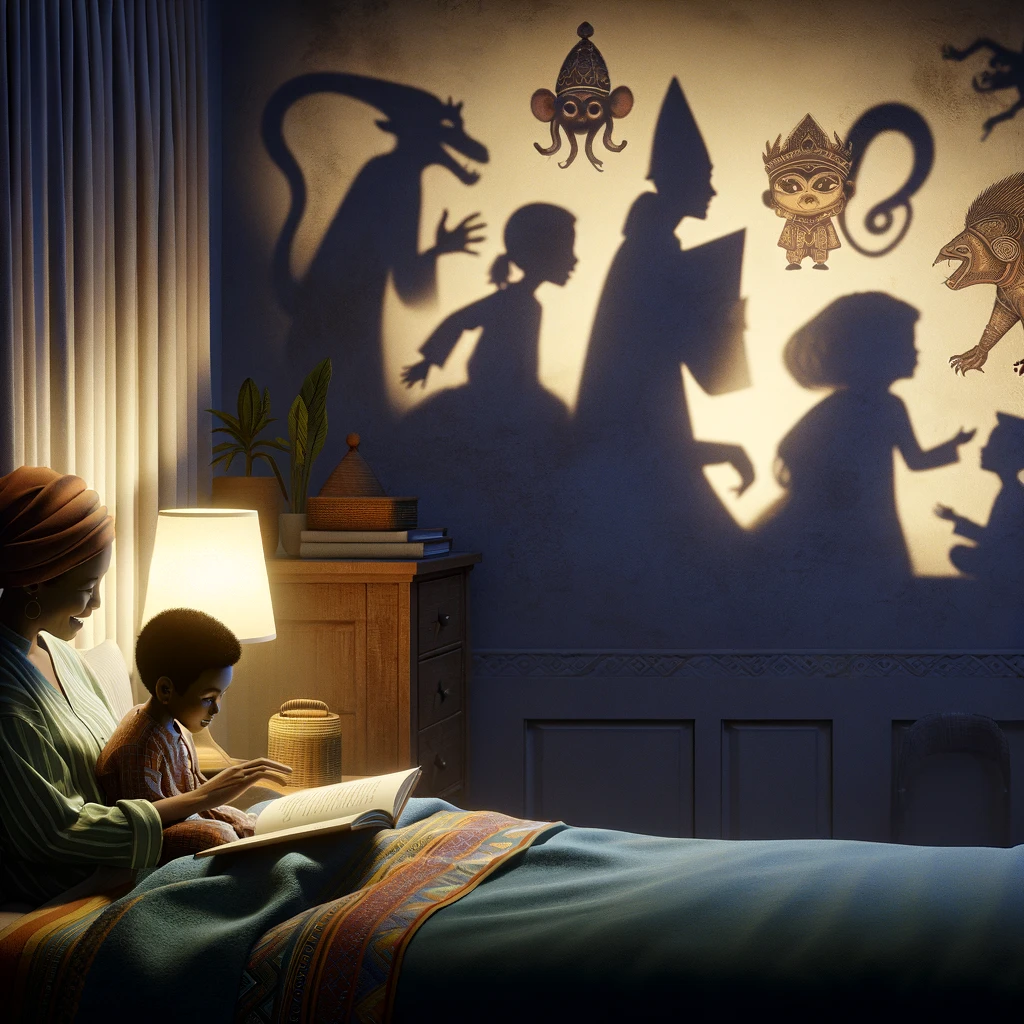Folk tales and myths from around the world are filled with unforgettable characters that have been passed down from generation to generation. As an early childhood educator, I’m always looking for captivating stories from diverse cultures to share with young readers. In this blog, I’ll highlight five of my favorite legendary characters that originate from West Africa, India, China, Slavic mythology, and Native America. Through describing their unique backgrounds and traits, you’ll get a glimpse into what makes each of these fantastic beings so memorable.
Anansi the Trickster Spider (West Africa)
With roots in Akan folklore from Ghana and Ivory Coast, Anansi is often depicted as either a spider, a man with spider-like qualities, or a combination of both. Known for his mischievousness and wit, he frequently tries to trick others into getting what he wants. What makes Anansi such an iconic character is that despite his deceitful nature, his schemes often backfire in comically spectacular ways.
Various tales feature Anansi using his creative tricks to steal from or fool more powerful creatures. However, his pride, arrogance, and greed ensure that his best-laid plans unravel in the end. Through mishaps that arise from his own hubris, Anansi becomes a lovable rogue that young readers enjoy following on his exploits. His humor and flaws make him relatable, while imparting moral wisdom. Across West Africa, Anansi tales continue as a popular way to teach children lessons in an entertaining format.
Vikram-Vetal (India)
This duo from classic Hindu mythology makes for an unlikely partnership. In the frame story, brave King Vikram faces a series of trials set upon him by the Vetal, a vampirish ghost-like being. Their pact is that Vikram must capture the Vetal by night in a cemetery and bring him to a ritual. But each time Vikram succeeds, the Vetal tells a riddle that Vikram cannot resist answering, breaking his silence. This allows the Vetal to escape back to the tree until the next day’s capture attempt.
While clever Vikram seeks honor and glory, the witty Vetal’s only aim is to inhabit a human body again someday. Each nightly episode features a new folk tale embedded within their overall story. With Vikram representing courage and righteousness, while Vetal epitomizes cunning and trickery, young readers are enthralled by their unique dynamic as they continue to match wits night after night.
Sun Wukong (China)
The Monkey King, Sun Wukong, is likely one of the most recognizable mythological tricksters from Eastern tales. He begins life as a monkey born from a magic stone. Gaining supernatural powers through Taoist practices, he becomes the king of the monkeys in the Mountain of Flowers and Fruit. But his arrogance lands him in hot water amongst the gods of the celestial realm many times.
Despite all the havoc he causes with his misconduct across heavens and earth, Sun Wukong redeems himself by becoming a disciple of the monk, Tang Sanzang, to fight demons during a legendary pilgrimage. What makes the Monkey King such an appealing character is he’s impulsive, strong-willed, mischievous, loyal, impatient, defiant, narcissistic, and virtuous all rolled into one. He uses cunning schemes blended with magical powers to wreak havoc or enforce justice as his mood strikes.
Baba Yaga (Slavic)
The fearsome witch, Baba Yaga, flies around in a giant mortar, wielding a large pestle as her magical scepter. She lives in an eerie woods filled with supernatural forces inside a strange house built atop enormous chicken legs that move about at her command. This dangerous old crone crafts peculiar potions while snacking on human children when she can lure them into her grasp. She’s as an iconic figure in Slavic folklore, typically playing the role of wicked villain.
However, Baba Yaga sometimes shows a more nuanced side by providing advice or even helping a hero or heroine on an epic quest out of her own inscrutable motives. Much of the fascination around this character for young readers is her command of dark magic combined with her morally ambiguous nature. While mostly malevolent, she at times displays some humanizing qualities, keeping readers guessing as to what she’ll do next.
Coyote (Native America)
There are over a hundred Native American traditional stories centered around the clever, shape-shifting Coyote. Often portrayed as an anthropomorphic canine, Coyote can walk upright or run on four paws as it suits his needs. Immortal, vain, lusty, greedy, gullible and always hungry, he’s often getting himself into difficult scrapes. His schemes to snag a meal or gain power tend to fail comically with more complex unintended consequences snowballing from his initial misconduct.
While flawed, Coyote helped shape the world in many Native myths, imparting imperfections and chaos into the lives of plants, animals, and humans. What makes Coyote such an appealing anti-hero is that through his blunders, the natural world becomes more interesting, diverse, and paradoxical. He also plays the role of cultural hero by slipping fire from gods to humans and inventing harmful implements causing suffering. Coyote ultimately uses wit and wile in an attempt to undermine beings more powerful than himself, delighting young readers with his cunning plans.
So if you’re interested in sharing fables from around the globe filled with the exploits of entertaining tricksters, these five unique characters from West Africa, India, China, Slavic mythology, and Native America make for captivating early reading. Their distinctive traits, fascinating backstories and memorable adventures are sure to spark children’s imaginations. Let me know if you have any other favorite folklore antiheroes I should highlight in a future post! I would be remiss not to mention – the stories you can craft on StoriCrafter.com draw inspiration from these and many other folk legends and tales from around the world!

